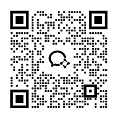How Do You Choose the Right Cross Roller Slewing Bearing?
Selecting the appropriate cross roller slewing bearing is a crucial decision that can significantly impact the performance and longevity of rotating equipment. These specialized bearings play a vital role in various applications, from construction machinery to medical equipment, where precise rotational movement and high load-bearing capacity are essential. The selection process requires careful consideration of multiple factors, including load requirements, operating conditions, and specific application demands. This comprehensive guide will help you navigate the selection process to ensure you make an informed decision that optimizes your equipment's performance and reliability.

What are the key factors affecting cross roller slewing bearing performance?
The performance of cross roller slewing bearing systems is influenced by a complex interplay of various factors that must be carefully evaluated during the selection process. Load capacity stands as one of the most critical considerations, as these bearings must handle both axial and radial loads simultaneously while maintaining precise rotational movement. The bearing's dynamic load rating indicates its ability to handle loads while in motion, while the static load rating represents its capacity when stationary. These ratings must be properly matched to the application's requirements to prevent premature failure and ensure optimal performance.
Operating conditions play an equally important role in bearing performance. Temperature variations can affect the bearing's material properties and lubricant effectiveness, potentially leading to changes in internal clearances and overall performance. The operating speed must also be carefully considered, as it impacts heat generation and lubricant requirements. Environmental factors such as dust, moisture, and chemical exposure can significantly influence bearing life and maintenance requirements. In challenging environments, special sealing arrangements or protective coatings may be necessary to maintain bearing integrity.
Another crucial aspect is the mounting and installation accuracy. Even minor misalignment can lead to uneven load distribution, increased friction, and accelerated wear. The bearing's mounting structure must be sufficiently rigid to prevent deformation under load, and the mounting surface flatness must meet specified tolerances. The preload applied during installation also affects bearing performance, as it helps eliminate internal clearances and enhance rigidity, but excessive preload can lead to increased friction and reduced service life.

Maintenance requirements and accessibility should also be considered during the selection process. Some applications may require regular lubrication or periodic inspection, so the bearing design should facilitate these maintenance activities. The choice of lubrication system and lubricant type must be compatible with the operating conditions and maintenance schedule. Additionally, the bearing's sealing system must effectively retain lubricant while preventing contamination ingress, particularly in harsh operating environments.
How do you calculate the load capacity requirements for slewing bearings?
Calculating the load capacity requirements for slewing bearings involves a comprehensive analysis of all forces acting on the bearing during operation. The process begins with identifying the static and dynamic loads that the bearing will experience. Static loads include the weight of the supported structure and any constant forces applied during operation. Dynamic loads encompass variable forces such as wind loads, operational forces, and impact loads that occur during normal operation.
The calculation must consider both axial and radial loads, as well as the resulting moment loads. The combination of these loads creates a complex loading pattern that affects Cross Roller Slewing Bearing selection. The maximum load capacity required can be determined using standardized calculation methods that take into account factors such as load direction, load distribution, and operating conditions. Safety factors must be applied to account for unexpected load variations and ensure reliable operation throughout the bearing's intended service life.
Load calculations must also consider the duty cycle of the application. This includes analyzing the percentage of time spent at different load levels and rotating speeds. Applications with frequent start-stop operations or reversing movements may require higher load ratings to compensate for the additional stresses imposed during these transitions. The calculation should also account for peak loads that may occur during exceptional operating conditions or emergency situations.
Modern computer-aided engineering tools can help analyze load distributions and simulate bearing behavior under various operating conditions. These tools can provide valuable insights into stress concentrations and potential failure modes, helping engineers optimize bearing selection. The analysis should also consider the stiffness requirements of the application, as inadequate bearing rigidity can lead to excessive deflection and poor performance.

The economic aspect of load capacity calculation cannot be overlooked. While it's important to select a bearing with sufficient load capacity, oversizing can lead to unnecessary costs and may not provide additional benefits. The optimal selection balances safety factors with cost-effectiveness, considering the consequences of potential failure and the cost of maintenance or replacement.
What are the maintenance requirements for optimal bearing longevity?
Maintaining cross roller slewing bearings requires a systematic approach to ensure optimal performance and maximum service life. A comprehensive maintenance program begins with proper lubrication management, as inadequate or improper lubrication is a leading cause of bearing failure. The lubrication schedule must be based on operating conditions, including speed, load, and environmental factors. Regular monitoring of lubricant condition can provide early warning signs of potential problems and help prevent catastrophic failures.
The inspection routine should include regular checks for unusual noise, vibration, or temperature changes, as these can indicate developing problems. Periodic measurement of bearing clearance and runout can help track wear progression and plan maintenance activities accordingly. The condition of seals should be monitored regularly, as seal failure can lead to lubricant loss and contamination ingress, both of which can significantly reduce bearing life.
Alignment checks should be performed periodically, especially in applications where the mounting structure may be subject to movement or deformation. Any misalignment should be corrected promptly to prevent uneven load distribution and accelerated wear. The tightness of mounting bolts should also be verified regularly, as loose mountings can lead to fretting corrosion and bearing damage.
Contamination control is crucial for Cross Roller Slewing Bearing longevity. This includes maintaining clean working environments during maintenance activities, using filtered lubricants, and ensuring seal integrity. In particularly dirty or wet environments, additional protective measures may be necessary, such as supplementary seals or regular cleaning of the surrounding area. The maintenance program should also include procedures for handling and storing replacement bearings to prevent damage before installation.
Proper documentation of maintenance activities, including lubrication records, inspection findings, and any corrective actions taken, helps track bearing performance over time and identify patterns that may indicate developing problems. This information can be valuable for optimizing maintenance schedules and predicting remaining service life. Training maintenance personnel in proper procedures and ensuring they understand the importance of following maintenance protocols is essential for program success.

Luoyang Huigong Bearing Technology Co., Ltd. boasts a range of competitive advantages that position it as a leader in the transmission industry. Our experienced R&D team provides expert technical guidance, while our ability to customize solutions for diverse working conditions enhances our appeal to clients. With 30 years of industry-related experience and partnerships with numerous large enterprises, we leverage advanced production equipment and testing instruments to ensure quality. Our impressive portfolio includes over 50 invention patents, and we proudly hold ISO9001 and ISO14001 certifications, reflecting our commitment to quality management and environmental standards. Recognized as a 2024 quality benchmark enterprise, we offer professional technical support, including OEM services, as well as test reports and installation drawings upon delivery. Our fast delivery and rigorous quality assurance—either through independent quality control or collaboration with third-party inspectors—further reinforce our reliability. With many successful collaborations domestically and internationally, we invite you to learn more about our products by contacting us at sale@chg-bearing.com or calling our hotline at +86-0379-65793878.
References
1. SKF Technical Handbook. "Slewing Bearing Selection and Maintenance Guide." SKF Group, 2023.
2. Rothe Erde. "Technical Fundamentals of Slewing Bearings." ThyssenKrupp, 2022.
3. NSK Americas. "Bearing Selection and Application Guide." NSK Ltd., 2023.
4. Kaydon Bearings. "Engineering Guide: Slewing Ring Bearings." Kaydon Corporation, 2022.
5. Schaeffler Technical Guide. "Design of Slewing Bearing Arrangements." Schaeffler Technologies, 2023.
6. IMO Group. "Technical Documentation for Large-Diameter Bearings." IMO Industries, 2022.
7. Journal of Mechanical Engineering. "Analysis of Load Distribution in Large Diameter Bearings." Vol. 45, 2023.
8. Timken Company. "Bearing Maintenance Practices." Timken Engineering Manual, 2023.
9. International Journal of Engineering Research. "Optimization of Slewing Bearing Design." Vol. 12, 2022.
10. American Bearing Manufacturers Association. "Load Rating and Fatigue Life for Rolling Bearings." ABMA Standards, 2023.

